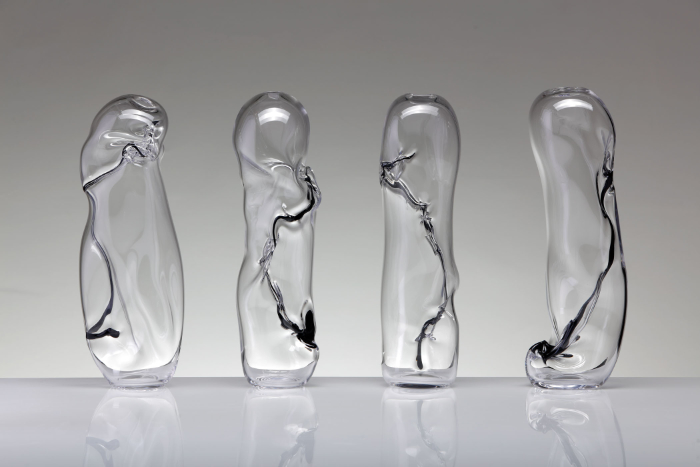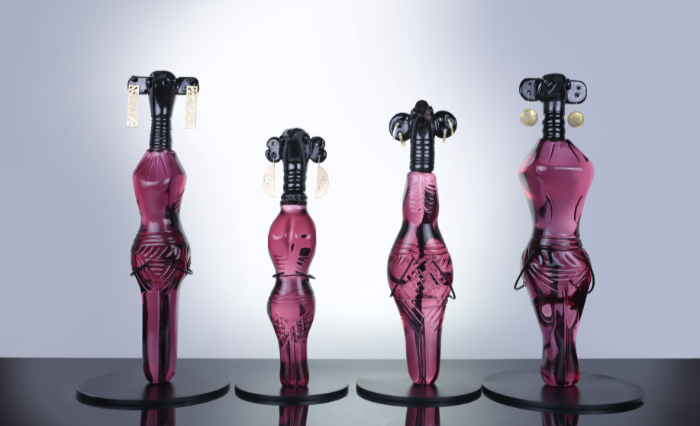
A contemporary glass lens on ancient Cypriot culture
British-Cypriot glass maker Theo Brooks investigates identity through his glass art, which is inspired by studying the history of Cypriot archaeology, rituals and languages. Linda Banks finds out more.
What led you to start working with glass?
I first came into contact with hot glass at the University for the Creative Arts in Farnham, Surrey. I was shown around by the professor at the time and, as soon as I saw someone working with hot glass, I was mesmerised. Once I started working with it, I realised it was a combination of all the things I had been studying at the time and loved. I really enjoyed the physicality of working with hot glass, after playing competitive sports as a kid. It’s a magical material unlike any other.
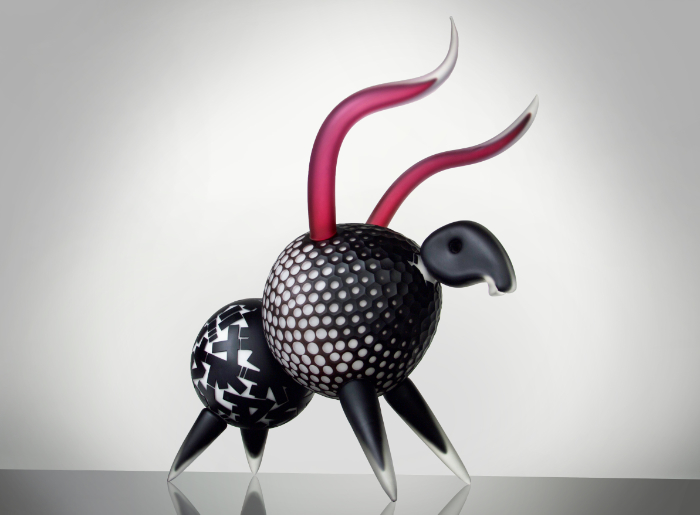
What glass techniques have you used and which do you prefer?
The glass techniques I work with are a combination of hot, cold and digital processes. The hot working techniques are a mixture of hot sculpting with an oxygen and propane torch and more traditional vessel making glass blowing techniques. Once the pieces are out of the kiln, the cold working begins! This takes the form of a variety of pattern- and texture-making processes through lathe cutting, sandblasting and engraving. I am keen on applying digital techniques with glass when I can, from plot cutting, water jet cutting or 3D printing.
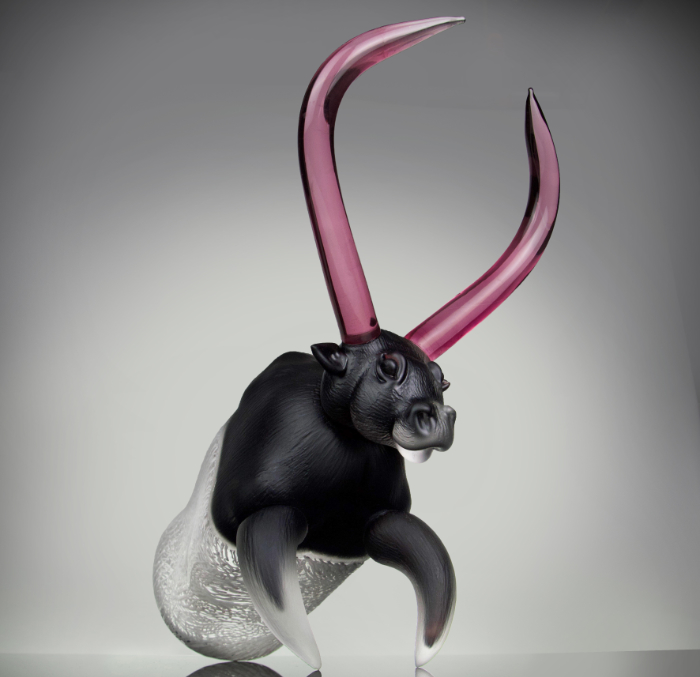
What is your creative approach? Do you draw your ideas out or dive straight in with the materials?
My ideas usually come from my research. Currently I read a lot about ancient Cypriot culture through archaeology papers from authors such as Jennifer Webb and Erin Averett. Archaeological sites and museum visits also offer a rich source of information. I have explored the collections of museums such as the Cyprus Archaeology Museum in Nicosia, the Cesnola Collection in the Metropolitan Museum of Art in New York and the Kelsey Museum of Archaeology in Michigan. These insights into Cypriot ancient cultures and the history of the island, combined with the aesthetics of the objects themselves, trigger the ideas. Then I try to bring these ideas into a contemporary setting. The idea manifests as rough sketches, which are then drawn out to measurement, callipered up and made. I don’t usually ‘make things on the fly’, as the process of hot sculpting requires the organisation of pre-made parts, a team of people, specific torches and equipment set up.
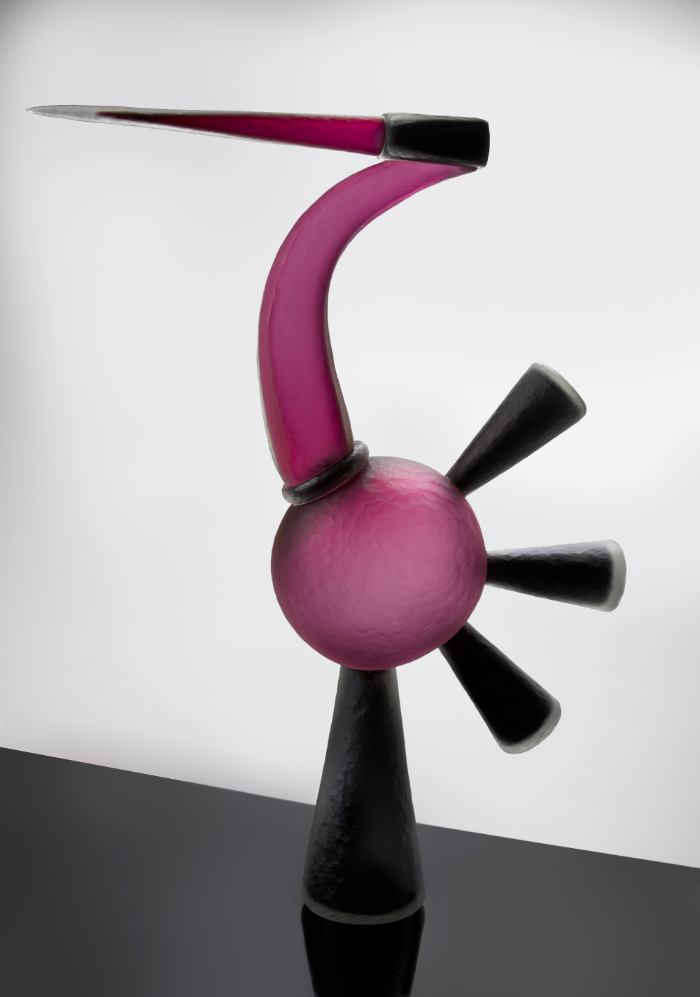
What inspires your work?
Being British-Cypriot and growing up in London, my work explores identity and connecting back to my heritage, family and culture. I have always felt displaced from my Cypriot heritage.
My current body of work explores ritual objects and practices in ancient Cyprus. My focus is on researching artefacts from the Bronze Age. However I do dip into the Iron Age and Cypro-Archaic objects too, as I find them fascinating. The motifs of the bull and birds were popular on objects and the iconography held symbolic value in particular rituals. These objects had specific uses, from marking out ritual spaces to apotropaic functions.
Another theme that runs through my work stems from my ongoing investigations into the ancient indigenous languages of Cyprus. I explore communication through the imagery, symbolism and sculptural forms on ancient Cypriot ceramics. These languages, such as the Eteocypriot language and the Cypro-Minoan syllabary, are indecipherable today. The glyphs remain lost information, making me focus on the line markings for their aesthetics. I am inspired by these markings, abstracting the symbols further and running them across the surface of glass sculptures. Lately I have been transforming the 2D glyphs into 3D forms. My dream would be to make monolithic-sized sculptures of them.
The reinvention and celebration of these objects allows me to discover a part of my heritage that I have been removed from. I go back even further into the ancient practices to unknown and mysterious spaces. The activities that took place in the cult rituals are intriguing. They were often performed in multi-purpose spaces, which included metal forging and oxen sacrificing. These rituals are believed to have paid tribute to the ‘Ingot God’ or ‘Horned God’, and only high members of society could participate. A lot of the rituals involved masking ceremonies, where people would wear ceramic and bucranium masks. These masks allowed them to take on a persona to either become an intermediary with the god, or to be brought spiritually closer.
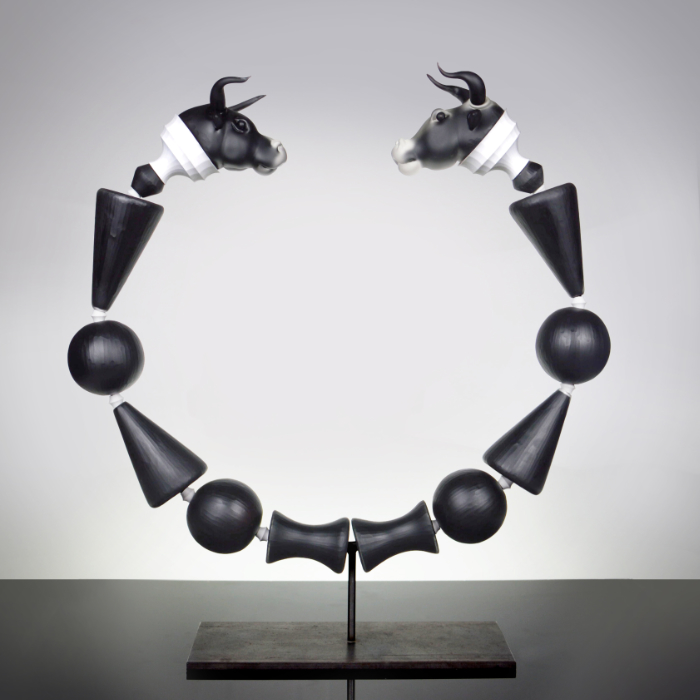
What message(s) do you want to convey through your art?
I intend my sculptures to be contemporary reflections of ancient Cypriot history, celebrating and promoting Cypriot arts and culture. As part of this facet of my work, I want to connect Cypriot glass makers around the world. I have created an Instagram page called @cypriot_glass_artists, where I have been reaching out to makers in different countries. I hope to spread the word further later this year through a demonstration I will be doing at the Glass Art Society conference [7-10 June 2023 in Detroit, USA], where I will be sculpting an ancient Cypriot artefact in glass.
An underlying theme that runs through my work is the effect of colonialism in Cyprus. This led to many ancient Cypriot objects ending up in museum collections around the world. Although not the main focus of my research, it can be hard to ignore when walking through vast collections of objects such as the Cesnola Collection in New York.
The Metropolitan Museum of Art holds the largest collection of Cypriot artefacts outside Cyprus. These were taken by Luigi Cesnola who, according to his reports, excavated 118 sites in Cyprus in the 1800s, amassing 35,000 archaeological artefacts. These objects are known as the ‘Cesnola Collection’. They were purchased by the Metropolitan Museum of Art in 1872 and Cesnola became the first director of the Museum soon after.
Following his death, part of the Cesnola Collection was dispersed to leading museums around the world, as well as several major American universities, such as Harvard, Stanford and the University of Michigan. Some of the objects in the collection are one-of-a-kind pieces and hold importance in the history of Cyprus. The way in which these objects were collected during the Ottoman Rule in Cyprus is controversial. It is said that a ship load of 6,000 objects was lost at sea during the journey to the US. Little information is given in the museum about how they were collected and came to the US, even though the Collection was a backbone of its works in its early days.

What is your favourite tool or piece of equipment and why?
Batisti engraving lathes, with a good set of diamond wheels, have to be among my favourite pieces of equipment to work with in the cold shop. I also love a coarse grit sandblaster, which allows you to you carve deeper and faster. In the hotshop, it has to be a custom pistol grip Nortel Midrange torch, which really allows you to work with glass in a unique way using different applications of the torch.
Do you have a favourite piece you have made? Why is it your favourite?
Usually it’s the next thing I’m excited to work on, but recently I have enjoyed working with mixed media with glass, particularly 3D printing and metal. There is something about the combination of finishes of the PLA [polylactic acid plastic filament] with satin glass that I like.
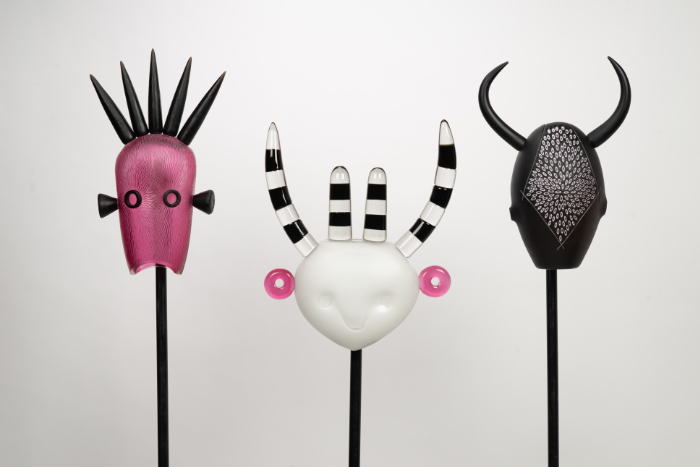
Where do you show and sell your work?
The last couple of years I have shown work at Venice Glass Week in Italy, the Tacoma Museum of Glass for the Glass Art Society conference show in the US, the Glass Biennales in Bulgaria and the UK, the Craft Glass Creation awards in Heijan, China and a solo show at the River House Arts Gallery in Toledo, Ohio, in the US.
In the UK, I have just started showing work with Blowfish Glass Gallery in Stourbridge, and I have just been showing at Collect in Somerset House, London, as part of ‘Collect Open’.
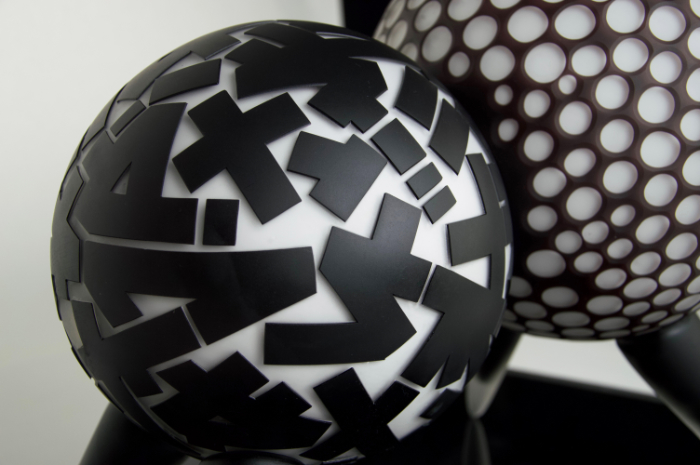
What advice would you give to someone starting out on a career in glass?
Work hard and be kind! Glass is an international language and should be embraced. They make glass all over the world, so let it be a reason to travel and see all the amazing ways that it is being used/worked across the world.
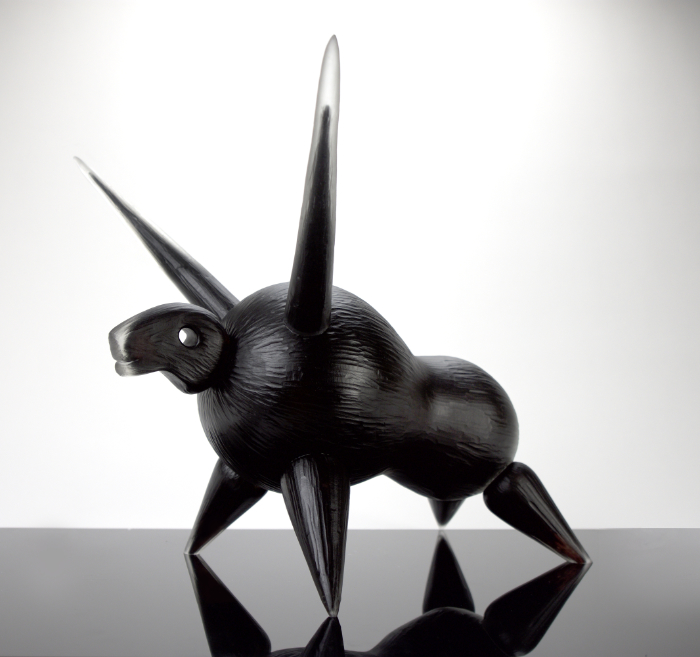
Do you have a career highlight?
Finishing setting up my first solo show at the River House Arts Gallery in the US was definitely a great feeling. Getting to enjoy the opening with my partner, the assistants that helped me make the work, mentors and friends was great. I hope to be able to have another solo show in the UK to share this kind of experience with people here.

Where is your glass practice heading next?
I have just moved back to the UK after three-and-a-half years in the US, so I am looking for the next thing. My main focus recently was finishing the installation for Collect Open, which I did as part of a Glass Tech/Tutor residency at UCA Farnham. Hopefully that will unfold further opportunities.
Is the global energy crisis affecting your practice?
I think that the global energy crisis is affecting everyone in the glass community and the way people are working. In my last role as the glass studio technician at the Tyler School of Art and Architecture in Philadelphia, we were really looking into ways to become more sustainable in the school and teaching setting. Assistant Professor in Glass Jessica Julius brought in people like Frederik Rombach, who works with waste glass, to do sustainability audits and think of creative ways to improve the way in which we work. I think it will take the efforts of the whole global glass community to address this for the future.
And finally…
Now that I am back in the UK, I would love to be more involved with the excellent opportunities that are available through CGS and participate in more shows and other events throughout the UK.
About the artist
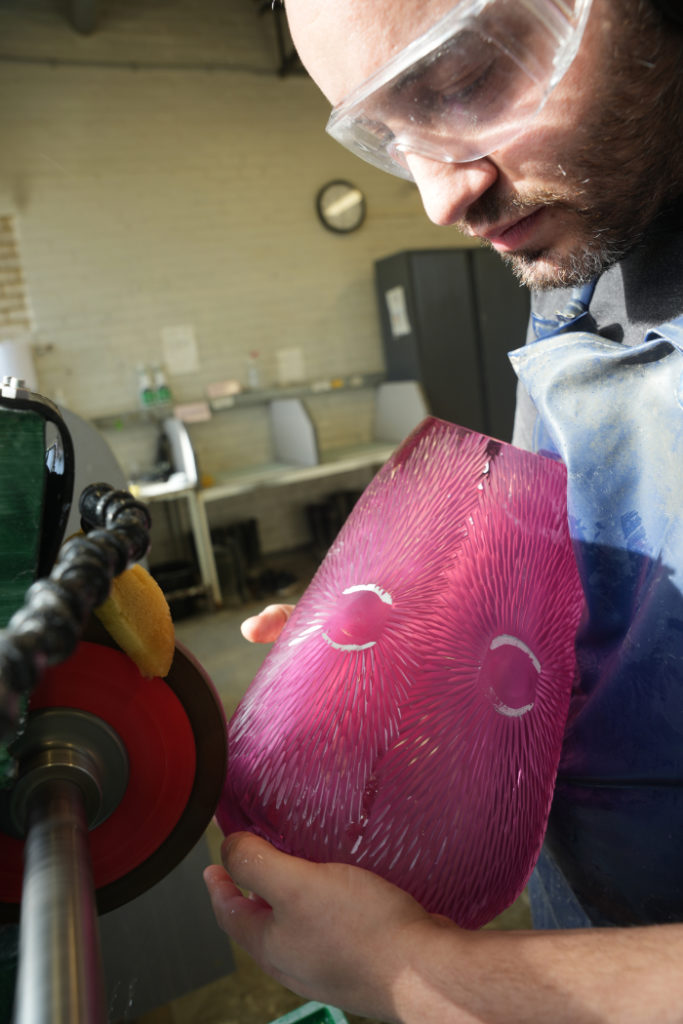
A British-Cypriot glass maker from London, UK, Theo Brooks studied glass at the University for the Creative Arts, Farnham, UK and gained his Masters in Fine Art from Bowling Green State University, Ohio, US.
He apprenticed in hot glass with Simon Moore, Smithbrook Glass Blowing Studio and Rothschild & Bickers Ltd, and studied glass cutting with Philip Baldwin and Monica Guggisberg, in Paris, France. Brooks has work in permanent collections and has exhibited internationally in Bulgaria, China, Czech Republic, Italy, Germany, USA and UK. He has also won scholarships to attended masterclasses at Penland School of Crafts, Corning Museum of Glass and the Toledo Museum of Glass. Most recently Brooks has been working as the glass technician at the Tyler School of Art and Architecture in Philadelphia, USA.
Main feature image: ‘Bird Faced Deities Set’ by Theo Brooks.
